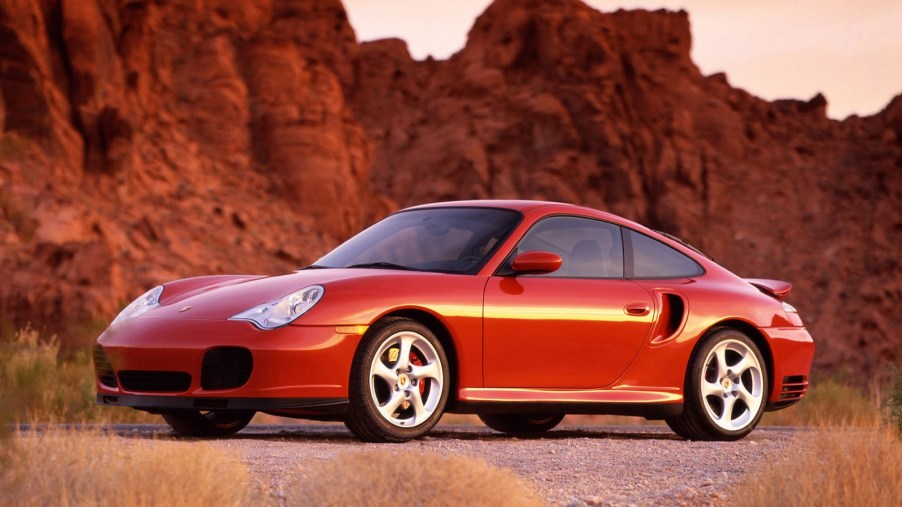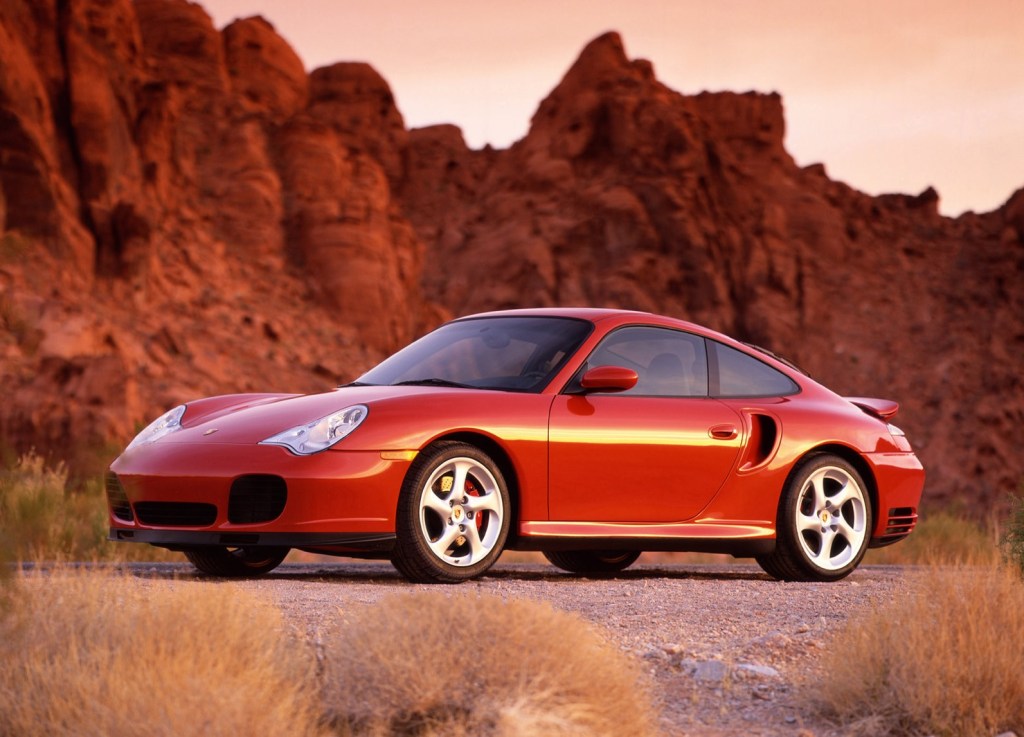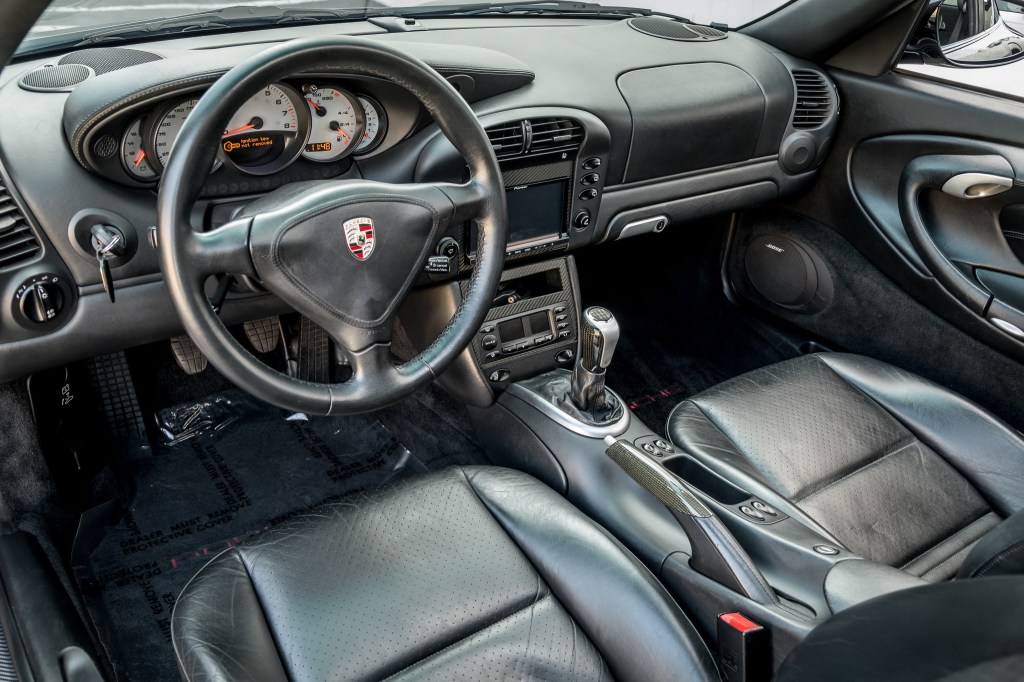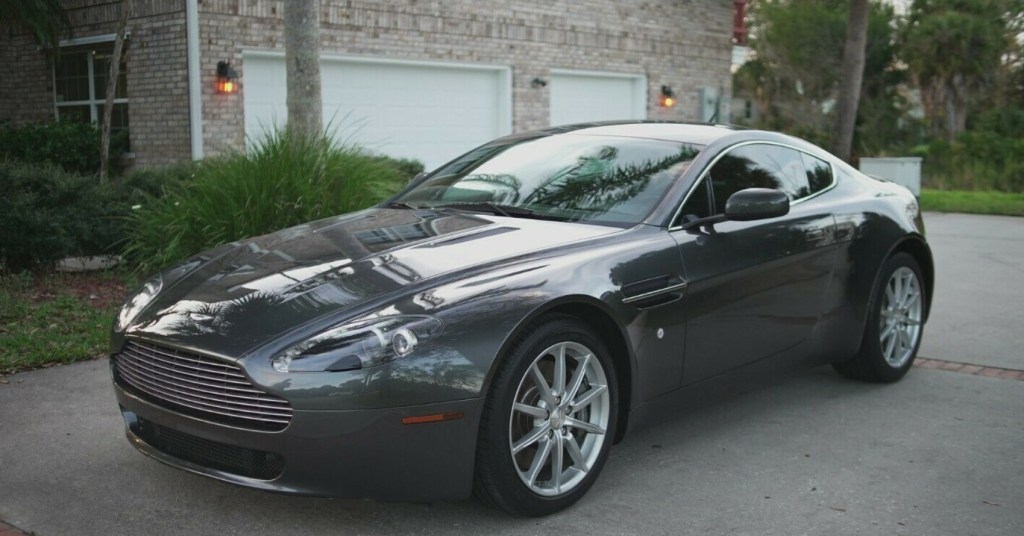
The 996 Turbo: The Best Affordable Used Porsche 911
Although it makes well-regarded vehicles, not all Porsches have been trouble-free. In particular, the 996-gen Porsche 911 has a black-sheep reputation, due to its dreaded IMS bearing. However, even notably reliable or high-end cars, like the Toyota 4Runner, Nissan Skyline GT-R, and Mitsubishi Montero have had engine problems. Though, as with the contemporary Cayman, the IMS problems are often exaggerated. And, because of that, 996s are relatively cheap. But, if you’re still worried, there’s another used affordable Porsche 911 to consider: the 996 Turbo.
The Porsche 911 996 Turbo avoids the IMS issue
The reason why many Porsche purists disdain the 996 911 is it switched from an air-cooled to a water-cooled engine. And, as is often the case with extensive redesigns, that caused some bugs. Of these, the Porsche Club of America reports is the IMS bearing, which had lubrication problems. And when it fails, the entire engine goes. However, the 2001-2005 Porsche 911 996 Turbo avoids the IMS and other 996 engine problems completely.
That’s because, as Hagerty explains, the 996 Turbo had a completely different engine. Its 3.6-liter twin-turbocharged flat-six is what’s known as a ‘Mezger’ or ‘Metzger’ engine, after famed Porsche engineer Hans Metzger. It’s actually derived from the earlier air-cooled engines, Evo reports, and the GT1 racing engine. No IMS problems, no head gasket issues.
What it did have, though, was more power.
It’s still fun to drive
Originally, the 996 Turbo developed 420 hp and 416 lb-ft. And, in addition to a 6-speed manual or optional 5-speed automatic, all 996 Turbos came with all-wheel drive. 0-60 came in less than 4 seconds. To help with high-speed stability, US models had an electronically-adjusting rear spoiler.

Then in 2002, Porsche revised the 911 996 Turbo. It added the X50 option, Elfer Spot reports, which boosted the engine to 444 hp and 457 lb-ft. To improve handling, Porsche also made the body more rigid. 2005’s Turbo S model added the X50 package, as well as carbon-ceramic brakes.
Car and Driver called its performance “simply intoxicating.” But, it’s not just power where the 996 Turbo thrills, Bring a Trailer reports. AWD means the car grips well even on rainy roads, making it “a real all-weather supercar,” Automobile Magazine reports. Especially with its stable chassis and stability control.

The suspension is compliant enough for long journeys but stiff enough to carve backroads. It feels nimble, almost like a modern car, Motoring Research reports. Hagerty calls it a “budget 959.” Arguably, the 996 Turbo helped turn the Porsche 911 from a good sports car into something that could rival supercars.
And it’s still relatively affordable.
996 Turbo pricing
Because the 996 Turbo doesn’t suffer the IMS issue, it’s always valued higher than the non-turbo models. And recently, Classic Driver reports, prices have started rising, as more people clue into these cars’ capabilities.

A decent-condition Porsche 911 996 Turbo, Hagerty reports, will generally cost between $40,000-$60,000. That’s roughly the same range as BaT reports. In comparison, that’s on the high end of Aston Martin V8 Vantage prices. Though, the 996 Turbo is noticeably quicker.
It is worth noting that, although the 996 Turbo doesn’t have the standard model’s engine issues, it’s still an old, high-performance car. Which means maintenance costs are going to be higher than, say, a Mazda Miata’s. However, FlatSixes and Rennlist report a $1000-$2000 annual maintenance cost isn’t uncommon. Which, for a high-end car, isn’t that unreasonable. Though as with any used car, we recommend getting a pre-purchase inspection.
But all in all, $50k for a daily-drivable supercar isn’t too shabby.
Follow more updates from MotorBiscuit on our Facebook page.


